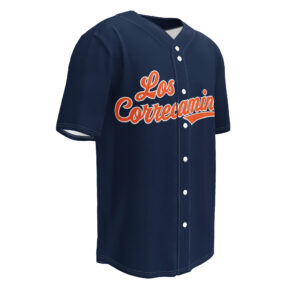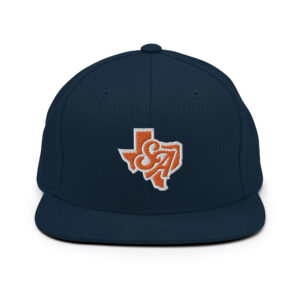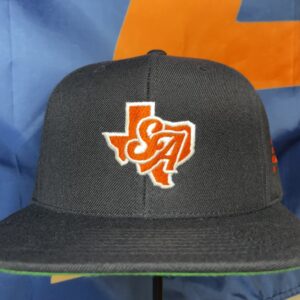Follow Alamo Audible:
There is an uptick in the buzz surrounding UTSA athletics this summer and across the NCAA landscape. While no sport is currently in season outside of practices, it seems to be one of the busier summers regarding NCAA and Roadrunner news. Whether it be new facilities, NIL, conference realignment, general pre-season hype, Twit..or.. X is popping with reposts and quotes, and #donteatthecheese is already being reminded.
The 2024 Division 1 Baseball season is still several months away. That doesn’t mean that UTSA and the NCAA are sitting idly by, waiting for Mid-February to roll around. Assistant Coach Ryan Aguayo really likes to repost a candid GIF of friend of the pod, UTSA Baseball Alumnus Ryan Flores. Kendall Rodgers from D1Baseball.com, among others, is doing his part to update everyone with baseball related news. And playing off Coach Traylor’s comment paraphrased to “it seems we just play football all year long,” the UTSA Baseball team will start their Fall Ball season in the next six weeks or so.
All that to say, we at Alamo Audible thought it might be helpful to check in regarding the NCAA/UTSA Baseball piece of the pie of the offseason buzz. While some of these updates aren’t new, the enactment is around the corner, and others correlate with UTSA’s transition to the AAC. We’ll wrap things up by mentioning some individual student-athlete news.
Give 3-Feet – In an effort to raise awareness and safety on the roads, cyclists often push the phrase “give three feet.” The NCAA is enacting its own 3-foot rule to increase player safety. A “minimum 3-foot fence or protective netting must be in place on the field side of dugouts.” This is required to be in place by Jan 1, 2024. When I stumbled upon this last spring, I was hopeful it would lead to an overhaul of the current dugouts at the Birdbath. While that is still possible, I am more of the mindset that the immediate product will be a netted fence/wall that extends out from the current configuration and reduces the foul territory down the baselines. That is the quickest and most affordable option. It also doesn’t require significant construction, with hopefully plans for a much more extensive renovation in a few years. The NCAA also recommends that padding be placed on all hard surfaces with which a player could collide during play.
Lights, Camera, “Action Clock” – While rare and sometimes confusing, there were a few times last season when pitchers violated the action clock or a batter wasn’t granted time due to time left on the action clock. Another new-year deadline will help clear some confusion for players and fans this season. It will now be required that “the between-innings and action clocks be visible on the field…clocks do not have to be permanently affixed to the stadium.” There is a one-minimum clock requirement, although multiple are encouraged. The update also states, “A clock should be visible to the field umpire responsible for the timing rules.” The placement of the action clock may present a new way to chirp at opposing pitchers by verbalizing the clock ticking down. Anything for some home-field advantage, right?
“Check That Stick!” – FAU came to town last season to open conference play. UTSA sent them back to Florida after achieving their first of four conference sweeps. Not without controversy, however. In the series finale, a two-run home-run by first baseman Nolan Schanuel was overturned for using a bat that had not been approved before the weekend slate. Fast forward through the 2023 season, and with other similar stories, the NCAA is requesting a change. Although not a fully proposed rule, the rules committee recommends that conferences expand the bat testing to “each game day” from the current rule of the series’ first game. I’m all for fair play; however, this seems more like putting a band-aid on other areas that need to be adjusted in the NCAA landscape. I’ll be curious to see how many conferences employ this, as it’s one more thing teams have to provide time for before the first pitch. For now, this topic gives us fun memory of the Bad Birds chirping back at a future 1st round draft pick.
“ESPN + Is Coming To Town!” – UTSA Athletics recently hosted AAC commissioner Mike Aresco on campus. The excitement of the new partnership was evident on both sides. One of those new toys the AAC brought to town is ESPN +. For the sake of time, we won’t dive into how extensive the broadcast requirements are. Just know that to be on ESPN+, there are minimum standards that have to be met. One section I do want to highlight, though, is the camera requirements and placements for baseball broadcasts. There is some leeway in that schools can have a four or five-camera placement. With what UTSA already has, they would need to add at least a 1st and 3rd base camera—fans who watched games on CUSA.TV saw a little of this towards the end of last season. From my vantage point, I don’t know if the quality and production of those angles would suffice or if improvements still need to be made. My biggest ask with these changes is that they allow for a better viewing experience and the opportunity for reviewable plays.
Table for three…Make that four – Back in January the NCAA Division 1 Council approved a proposal to change the volunteer coaching position to a full-time paid position. While the goal was for a fifth position to be approved, that did not happen. Last season, Mikey Bielamowicz held the volunteer assistant role for the team. So, while the new rule doesn’t change the personnel number, it at least gives someone like Bielamowicz and others around baseball added benefits with the change. The voluntary assistant position could only earn income from camps and other minimal places. Of course, there are differences, but there are many similarities between the volunteer assistant coach and non-scholarship athlete. These coaches put in several hours of work with little to nothing provided to them by the university. As the role of the NCAA coach increases, I could see them vying again for additional coaches. For now, it is a step in the right direction to compensate these positions fairly.
Less is more, or more is less? – One change that is happening NCAA-wide but will undoubtedly change how Coach Hallmark and his staff conduct business is the NCAA increasing the roster limit and number of scholarship athletes for baseball. Baseball gets 11.7 scholarships. That number isn’t changing. Starting this season, though, teams can now have 40-man rosters instead of 37, and they can spread those 11.7 scholarships out among 32 players instead of the previous 27. Allowing more athletes to be on scholarships is a good thing. However, the minimum percentage that an athlete can be given is 25%. This means that while some will benefit, others will be affected as their scholarship is reduced to come up with that 25% for the new athletes. I imagine that without it being said, the NCAA is leaning on the opportunity of NIL to fill in the gaps for these student-athletes.
NIL Going Away? CHILL – As the NCAA continues to navigate the NIL world and everything that comes with it, there continues to be speculation on how collectives and organizations will be affected. For now, groups like the Runners Rising Project and Meep Meep Apparel continue to support UTSA student-athletes through their work both on and off the field. Runners Rising Project allows donors to designate sport-specific donations, while Meep Meep Apparel’s first official athlete was UTSA alumnus Luke Malone.
Caleb Hill made a significant impact on the Roadrunners’ success last season with both his glove and his bat. Going into his Senior year, he is also working on building his brand. Two weeks ago, Hill announced a partnership with Boosted. Fans can get apparel that highlights the left fielder’s catchy nickname, “CHILL,” you could hear being echoed from the dugout. He is also Meep Meep Apparel’s newest athlete. Knowing Meep Meep Apparel’s passion for UTSA Baseball, we may see more baseball partnerships announced before the 2024 season begins. You can use “CHILL15” to get 10% off your next order at meepmeepapparel.com.
Incoming ‘Runners – The Roadrunners had several transfers make a huge splash last season. It appears they will again look to transfers to help fill the gap in positions currently up for grabs. UTSA’s Friday night starter, closer, and five of eight field positions are gone. I mentioned Ryan Aguayo posting a GIF of Ryan Flores with the birds-up emoji above. It seems that this is the assistant coach’s signal that another player has either committed or signed. We will have to wait until the fall and spring to see how all of these potential additions shake out, as a lot can happen between now and February. Looking at the stats of these players who have stated their commitment, it appears it could be another beneficial class of transfers. One of those commits, verified by his X (?) account, is Robert Orloski. Orloski, a high school senior in 2023, was drafted by the Boston Red Sox in the 20th round of the MLB draft. It doesn’t appear that he signed a contract, though, and still has UTSA commit in his bio. Orloski is UTSA’s first high school commit to be drafted since 2003.
When occasionally driving by the Birdbath, I still haven’t noticed any significant facility changes. It is only August, and I think we all can agree that getting Park West up and running was the administration’s main focus, and rightfully so. I’m hopeful that some of what I’ve heard through the grapevine will come to fruition before next spring. Regardless, it should be another exciting season of UTSA Baseball. What better way to immediately make some noise in UTSA’s first full athletic season in the American Athletic Conference than finally getting over the hump again, punching that regional ticket, and earning the team’s first regional appearance since 2013.
Want to see more or less content like this? Let us know with an upvote or downvote.
Share this post:









Related Posts
🔐 Film Breakdown: ECU 2025
🔐 UTSA Baseball Sign 10 Future Roadrunners on NSD
🔐 Film Breakdown: Charlotte 2025